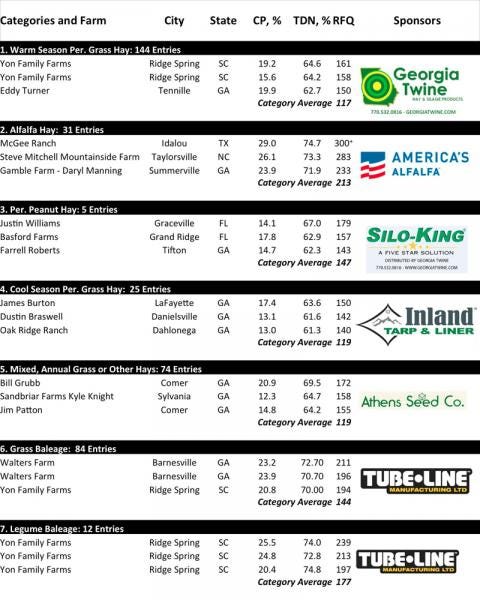
Southeast hay farmers are expanding their production, and more of them are interested, it seems, in putting the quality of their hay to the test.
Southeast hay acreage is seeing “a considerable amount of growth, and we’ve had a number of acres gone into forage crops in the past couple of years because of commodity prices being lower and cattle and dairy industries generally a little bit stronger, especially when compared to recent commodity prices” said Dennis Hancock, University of Georgia Extension forage specialist.
“Many of our producers have expanded acreage and are looking at harvesting some of our cover crops, too, for baleage,” Hancock said, during an interview Oct. 20 at the Sunbelt Ag Expo.
The 2015 Southeast Hay Contest, he said, provided a good snapshot of the growing season many Southeast producers faced this year. During the early part of the season, the quality of most Southeast hay was good. But after that, conditions made it tougher to get good hay cut.
“Many of our producers here in the Southeast through June and July were relatively dry and that stressed us quite a bit in terms of growth and also nitrates. We had about 11 percent of the samples submitted (for the contest) fail to meet the criteria for nitrates. They were disqualified because of high nitrate level (greater than 5000 ppm.) That’s unusually high (for the contest) but we had a high number of regular samples (not associated with the contest) coming in with unusually high nitrate levels due to the stress in some areas.”
The later part of the season brought excessive rain, which made it tough to make and cut good hay, he said. “(Weather) forecasts went kind of haywire toward the end of August and into September,” he said.
“But the Southeast Hay Contest presented this year by Massey Ferguson was the best we’ve ever had in terms of total entries and quality,” said Hancock, who attributed the increase in entries to the sponsorship money, which allowed organizers to market the contest and “drum up a lot more interest. … And the competition was fierce with 375 entries vying for the top spot. This is a considerable increase over the 185 entries received in 2014.”
The average relative forage quality, or RFQ, was as good as or better for this year’s contest than it has been for the 11 years the contest has been underway. “Good management can make a remarkable improvement in forage quality in both favorable and unfavorable weather conditions,” he said.
The overall grand prize winner of the contest this year had a RFQ score of more than 300, which was off the charts, he said, and it came from some alfalfa made at McGee Ranch in Idalou, TX. The ranch got a new Massey Ferguson RK Series rotary rake for the 2016 hay production season and $1,000 for being the grand prize winner.
The winner of the warm-season perennial grass hay category was Yon Family Farms from Ridge Spring, SC, with a RFQ of 161. The farm got a Massey Ferguson DM Series Professional disc mower to use for the 2016 hay production season.
The top three places in each of the seven other categories also received money: 1st prize $125, 2nd prize $75 and 3rd prize $50.
The annual contest is collaboration between the Alabama Cooperative Extension Service, Clemson Extension, University of Florida and the University of Georgia Extension.
Winners of the 2015 Southeast Hay Contest

About the Author(s)
You May Also Like






